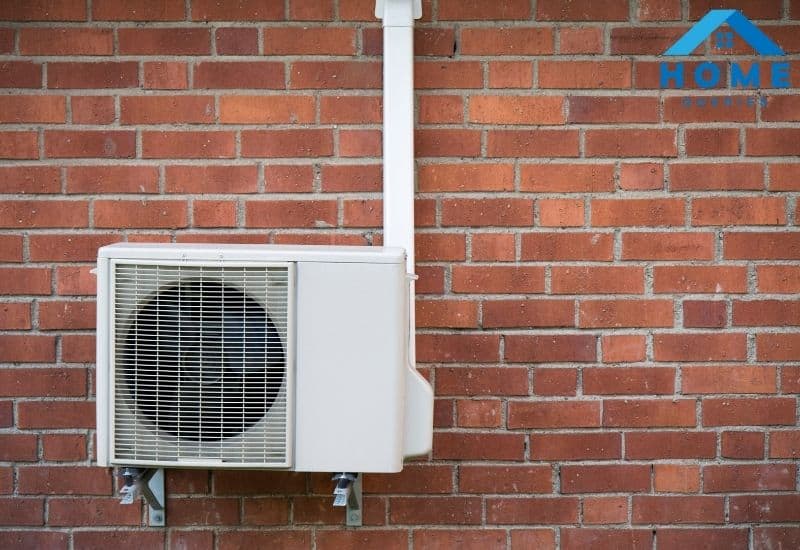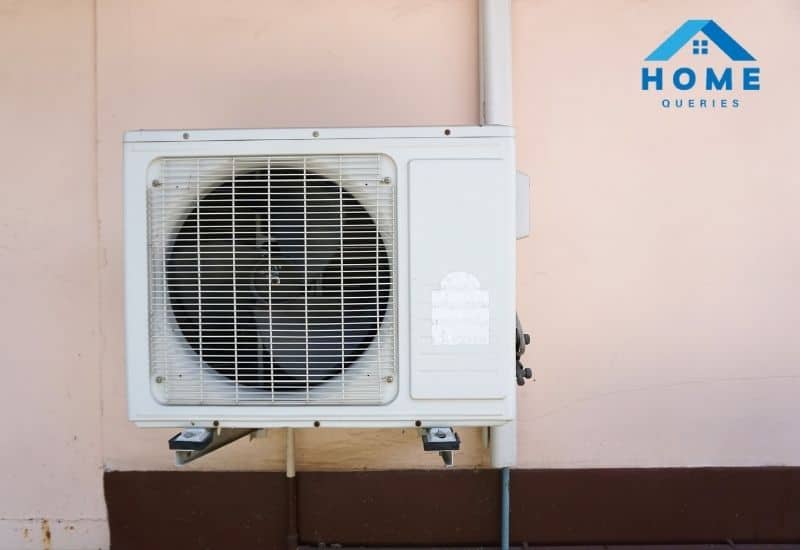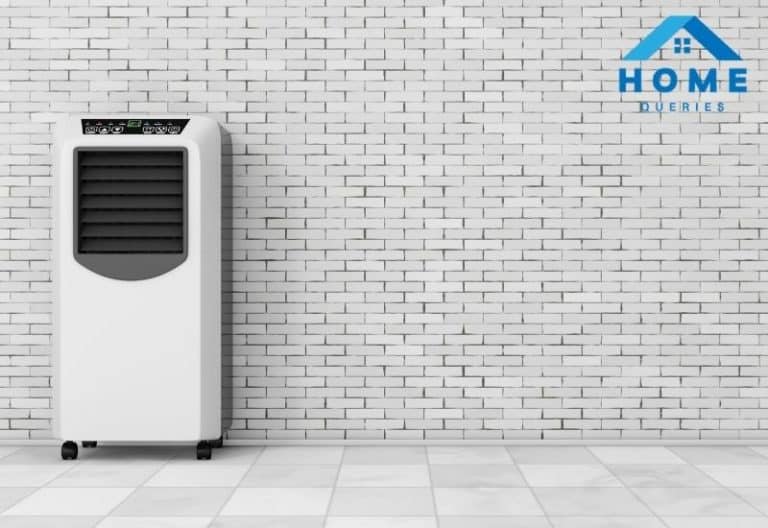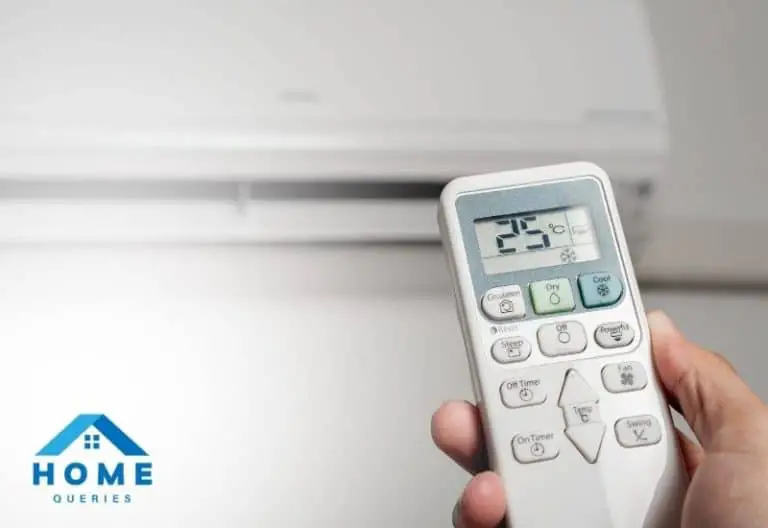Running a fan and an air conditioner at the same time may appear redundant. The two, on the other hand, chill your home in various ways. These provide a larger surface area for air circulation and rapid cool dispersion throughout the room. We’ll talk about, “Does putting a fan in front of an air conditioner help?”
You may modify the settings on your air conditioner by using a fan. To chill the house, it does not need to be on full blast or set to a very frigid temperature setting, which costs more money.
Summer is just around the corner, and temperatures are expected to rise in the following months. Air conditioners will be utilized in practically every home and business as the temperature rises. There’s a heated argument going on everywhere about whether or not you should operate the fan when using an air conditioner. We will discuss this right down here.
On a hot day, your home’s air rises to near the ceiling, while cooler air descends to the floor. You may change the air in your home to more equally disperse it by strategically placing fans and regulating the airflow. This change in air movement results in a cooler environment. Make use of your fans to transport cold air from the ground up.

Does Putting A Fan In Front Of An Air Conditioner Help?
When using an air conditioner, you must utilize a fan since it will help you conserve energy and improve the cooling efficiency of your air conditioner.
You’re probably wondering how it’s even feasible at this point that both the fan and the air conditioner consume power separately. Therefore if they operate at the same time, the power consumption will be higher, resulting in higher electricity bills.
We are going to give a wide description with various perspectives right in this article. Just read the whole article patiently and you will get all your questions answered.
In the summer, the heated air in your room rises towards the ceiling due to its lightness, whereas the cold air from the air conditioner sticks to the floor due to its high density. The cool air is unable to reach the distant hot areas of your house as a result of this phenomenon.
Then your air conditioner will have to run for longer periods of time to cool those left-out areas, and when your air conditioner runs for longer periods of time, it will use more energy and result in higher electricity bills.
A ceiling fan, on the other hand, does not reduce the temperature in your home. It simply makes you feel cooler by circulating air over your skin and removing heat from your body.
When you switch on the fan with the air conditioner, as opposed to both cases, the fan will raise the cool air on the floor and spread it evenly around your room. As a result, the cold air will reach the heated areas that have been left out more quickly, and your air conditioner will have to work less, resulting in a lower electricity cost. This is why we propose combining an air conditioner with a fan.
Read more: Why Are Air Conditioners Placed At The Top Of A Room?
How To Use An Air Conditioner And A Ceiling Fan Together?
If you have air conditioning, a ceiling fan will allow you to raise the temperature by around 4 degrees Fahrenheit without sacrificing comfort. Assume that when you’re at home, your central air conditioner is set to 76 degrees. Increase the temperature of your air conditioner by 4 degrees to 80 degrees if you use ceiling fans.
At a lower cost, the ceiling fan will keep you just as cool. The amount it saves you on your utility expenses is determined by how often you use your air conditioner or ceiling fan. You will save money if you use the fan instead of central air conditioning only.
One of the most obvious reasons to not have the air conditioner and fan on all of the time is to save money. As you may expect, it consumes a lot of energy when it is continuously in use. As a result, you may end up paying hundreds of dollars more in annual energy costs than you would otherwise.
When it’s hot outside, some individuals make the mistake of assuming that operating the fan instead of the air conditioner will save them money. While the fan consumes less energy than the air conditioner, leaving it on will almost surely increase your utility expenses.
Constantly running the fan raises your system’s maintenance requirements. As a result, the best situation is to operate both the air conditioner and the fan for a certain period of time until the room temperature is to your liking. Then turn off the air conditioner as well as the fan.
Should You Keep The Fan Switch On/Off When Your Air Conditioner Is Running?
Keep the fan on since it will improve the efficiency of the air conditioner and save you money and energy. The air conditioner’s cold air does not reach the room’s far heated areas because the cold air sticks to the floor due to its heavyweight or density.
As a result, it takes longer to chill the room to the temperature set on the air conditioner’s thermostat, which means your air conditioner will operate for longer and you will have higher electricity costs.
Furthermore, you should strategically arrange the fans, such as just beneath the air conditioner, so that the cold air is dispersed around the room and you save energy and money.

How To Position A Fan In Front Of An Air Conditioner And How It Will Help?
You can cool your room faster by raising the air draft, which increases the heat transfer rate. When altering the fan’s speed, exercise extreme caution. If you utilize a high-powered fan, the cold air will be blown to a faraway location, resulting in unequal air distribution.
If you absolutely want a table fan in front of the window air conditioner, this is the place to go. Determine the greatest distance your air conditioner can spread air. Direct the fan to the center of the room from a distance where there is minimal air throw.
The best approach to cool a room with air conditioning is to place fans beneath or beside the air conditioner vents. Because the fans will lift the cool air as it comes out of the air conditioner vents and throws it to the far corners of the room, preventing it from settling down and clinging to the floor from that angle.
There’s no reason to be anxious if you wish to enjoy the same energy-saving benefits from a ceiling fan. Because you can get the same results with a portable fan and an air conditioner. Simply place any fan beneath or next to the air conditioner and watch the magic happen. The air conditioner’s chilly air will be blown away into the room’s far corners by the fan, which will keep it from settling on the floor.
Your air conditioner will operate for a shorter period of time yet provide more cooling benefits in the same amount of time if you do it this way. As a result, your air conditioner will use less energy while providing greater cooling, and your electric bill will be lower. This is a terrific way to save money while also enhancing the efficiency of your air conditioner’s cooling system.
Is this the best Way to Circulate an Air Conditioner?
Yes, this is the best way to increase the circulation of your air conditioner. You can accomplish it by using a ceiling fan or a portable fan. Using a fan in conjunction with the air conditioner is the greatest way to circulate air conditioning.
The objective is to optimize your room’s air conditioning circulation so that the air conditioner’s cool air reaches every corner of your room more rapidly, reducing power usage and saving you money.
Either use a ceiling fan or position a portable fan beneath or next to the air conditioner vents. The fans will blow cool air into the corners of your room, causing the temperature to drop faster, and your air conditioner will now run for less time while producing tenfold greater cooling effects.
Either use a ceiling fan or position a portable fan beneath or next to the air conditioner vents. The fans will blow cool air into the far corners of your room, causing the temperature to drop faster, and your air conditioner will now run for less time while producing exponentially greater cooling benefits while using less electricity.
When your air conditioner consumes less electricity, you will have a reduced electric bill, which means less money will be spent out of your pocket, allowing you to save more.
Is Using Both Fan And Air Conditioner Good For Health?
Yes, using an air conditioner with a fan is beneficial to your health, and there is nothing wrong with using an air conditioner with a fan. Using a fan with an air conditioner will help you enhance cold air circulation in your room while also saving you a lot of money and electricity.
Having your air conditioner’s fan go all the time can better stabilize your home’s comfort. It’s also good if one of your family members has allergies, asthma or other respiratory issues. That’s because the air is continuously being circulated and filtered.
It doesn’t damage your health anyhow. You can use both an air conditioner and a fan comparatively depending on your room temperature and humidity. It will help you rather than affect you.
Which Consumes Less Energy and Costs less?
Ceiling fans are commonly thought to be incompatible with air conditioners. Ceiling fans force hot air down, increasing the burden on air conditioners, according to logic. To some extent, this is correct, but what many overlooks is that ceiling fans may create a wind, making individuals in the room feel cooler and more at ease.
With a ceiling fan going, you can raise the Air Conditioner’s temperature by 2 to 4 degrees without sacrificing comfort. Increasing the air conditioner’s temperature can help you save money on your utility bills.
For air conditioners and a fan, setting them auto is the highest energy-efficient setting since the fan will only work when your air conditioner does. For your help, we did an experiment. It is presented below :
- We first measured the air conditioner’s electricity consumption at 22 degrees Celsius with the ceiling fan turned off. In one hour, the air conditioner used 1.4 units of power.
- Then, at 26 degrees Celsius, we monitored power use with the ceiling fan at full speed. The thermal comfort we achieved was the same as when the thermostat was set to 22 degrees and the ceiling fan was turned off. In one hour, the air conditioner used one unit of electricity.
- Then again, without the ceiling fan on, we monitored electricity use at 26 degrees Celsius. In one hour, the air conditioner used 0.8 units of power.
We get the conclusions of the experiment are-
- The usage of a ceiling fan reduces electricity consumption if the temperature of the air conditioner is increased to offer the appropriate thermal comfort.
- When a ceiling fan is used in conjunction with an air conditioner set to the same temperature, the effect is the opposite, and the air conditioner consumes more energy.
- As long as one sits closer to the air conditioner, a setting of 26 degrees without a ceiling fan will be comfortable. If individuals are seated far away from the air conditioner, utilizing a fan to circulate the air makes everyone in the room more comfortable because the space cools down as the cold air circulates.
Central air conditioning consumes approximately 3 kilowatts and costs approximately 36 cents per hour.
A ceiling fan uses only 30 watts and costs roughly one cent per hour to operate.
However, if you use both an air conditioner and a fan, you will save more energy than if you solely use an air conditioner. As a result, your costs will be lower than they would be if you used a typical air conditioner. That is why, for the sake of consumers’ health and wallet, experts recommend utilizing both an air conditioner and a fan.
Conclusion
Following an extensive review of the material, we can conclude that placing a fan in front of an air conditioner is really beneficial. It assists consumers in lowering their electricity expenditures while also increasing their comfort.
It assists in lowering the cost of operating an air conditioner, allowing middle-class people to adjust their budgets to purchase an air conditioner and ensure their comfort. In the end, I tried to answer your question that is, “Does putting a fan in front of an air conditioner help?”






